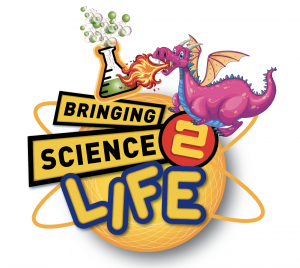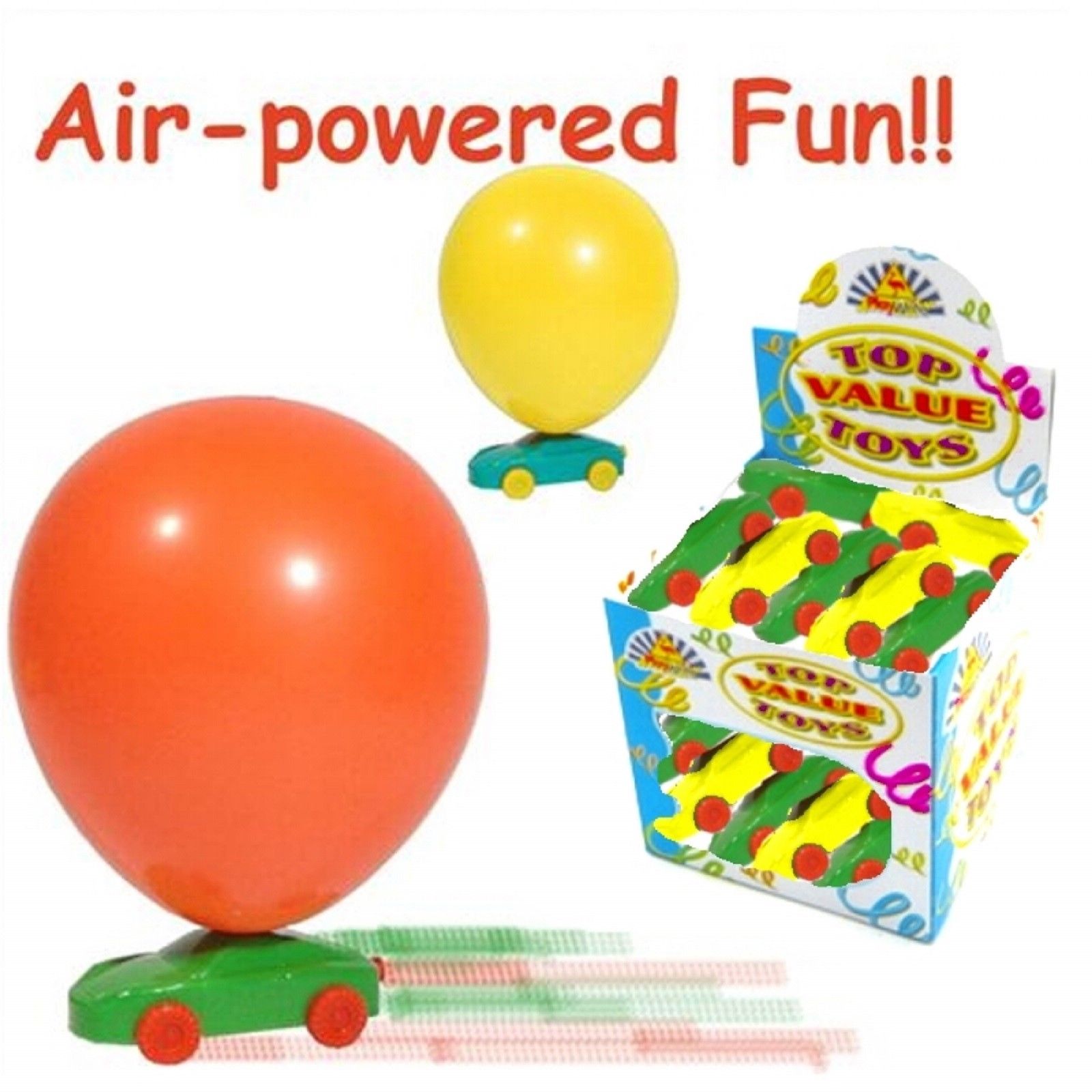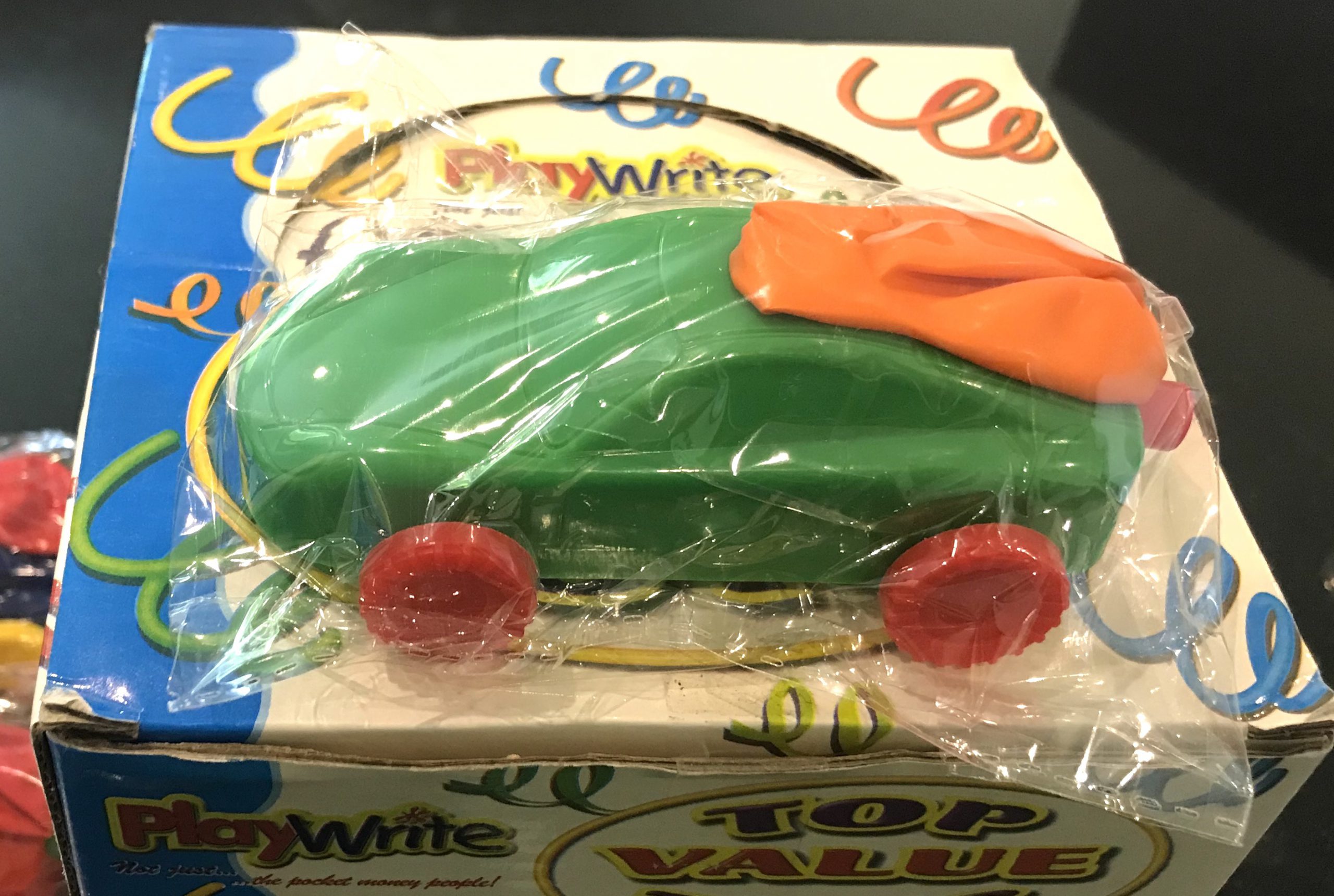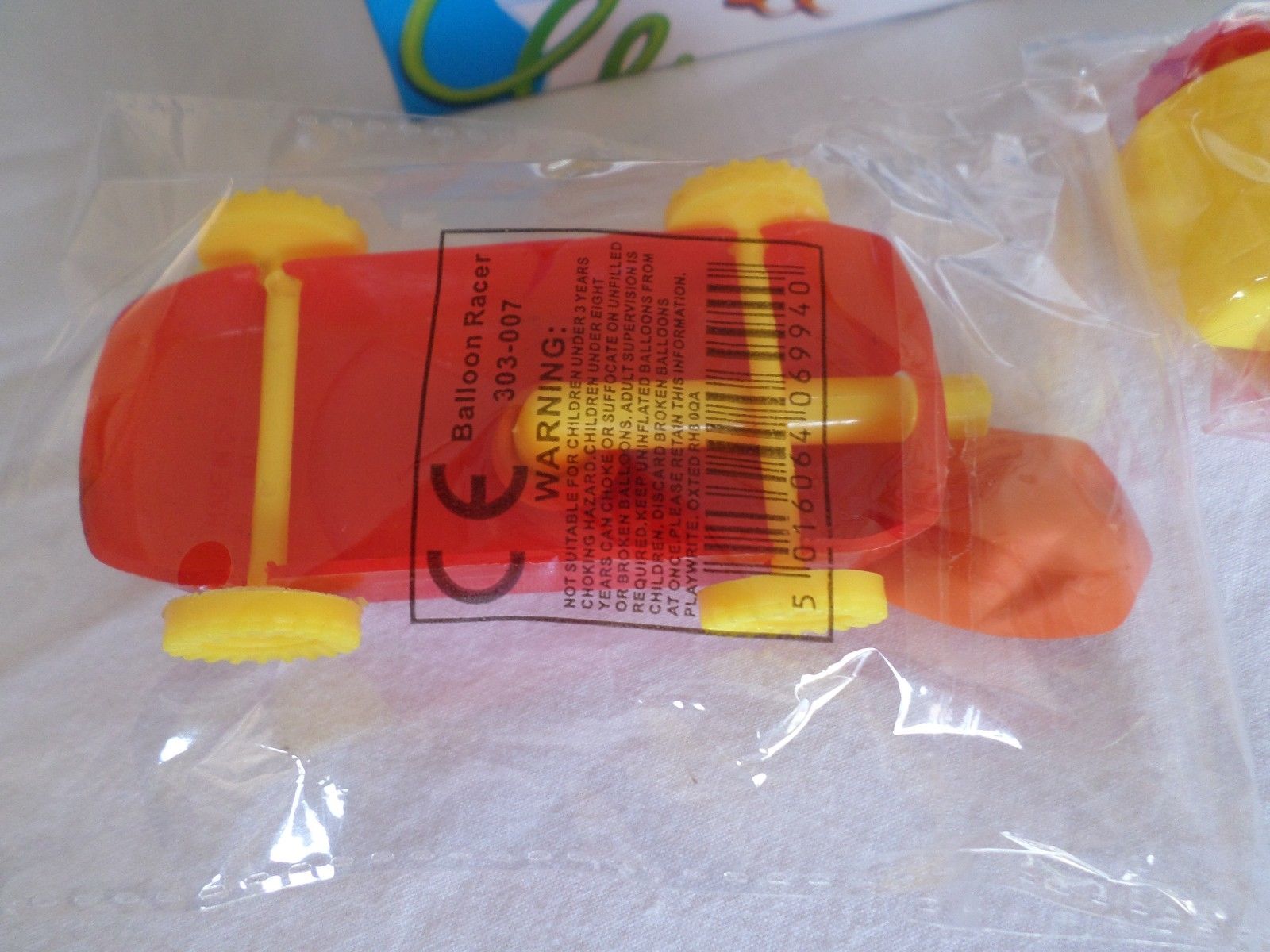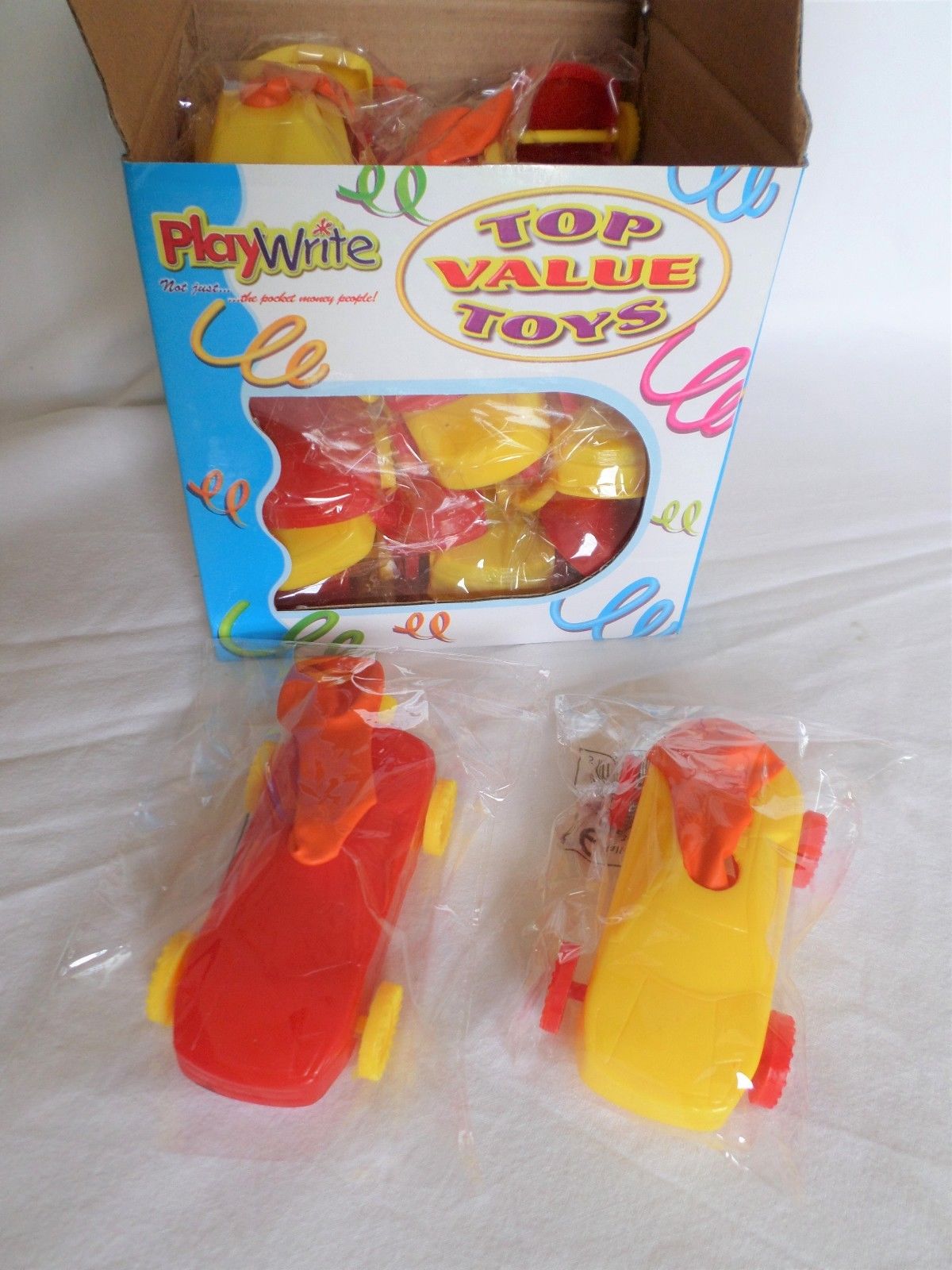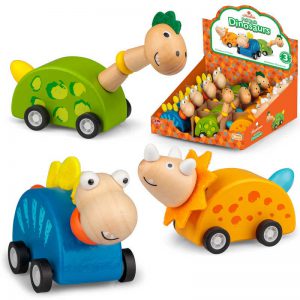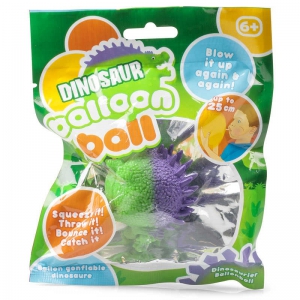Description
Air-powered racing cars!
These balloon racing cars are a great energy changing toy.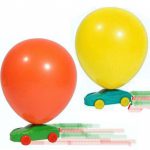
The stretched balloon stores ‘strain potential energy’ this is very quickly converted into moving (kinetic) energy
- Fantastic old favourite that children never tire from!
- Blow up the balloon and use it to send the car racing across the floor! Great fun!
- In a variety of colour combinations
- Various colours – 2 supplied
- Each supplied with 1 balloon
- Great for prizes, gifts and party bags
The Science
This is a fun ‘energy changing’ toy. Gadgets which change energy from one form to another are called transducers.
When air is blown into the balloon the balloon stretches and stores elastic potential energy.
When released the stretched balloon very quickly returns to its originally shape – pushing the air out of the balloon.
The toy’s design makes use of this physical property and uses the expelled air to move the car forwards. This is a classic example of Newton’s 2nd Law of Motion.
The mass of the balloon car will greatly affect its acceleration at the start.
Newton’s 2nd Law of Motion states that the acceleration of an object is equal to the amount of net force acting upon it divided by the mass of the object. The less mass the car has, the faster it will accelerate!
A balloon is defined as an inflatable flexible bag filled with gas, such as air or helium. Modern balloons are made form materials such as rubber, latex, polychloroprene, metalised plastic or a nylon fibre.
Long before there was something as stretchy as rubber, balloons existed. In the pre-rubber era, balloons came from animal bladders. A pig’s bladder was inflated by Galileo in an experiment to measure the weight of air!
Some gruesome science!
Aztecs are thought to be the very first people in history to make ‘balloon animals’ out of the bowels of cats to be presented to the gods as a sacrifice. The bowels were carefully cleaned, turned inside out, and sewn with a special vegetable thread whose main property was that it stuck to itself when left to dry in the sun, and this produced an almost airtight seal. The bowels were then twisted and air was blown into them after each twist.
The first rubber balloons were made by Professor Michael Faraday in 1824 for use in his experiments with hydrogen, at the Royal Institution of Great Britain in London. Faraday made his balloons by cutting two round sheets of raw rubber, called caoutchouc (French word for rubber), laying them one on top of the other and pressing their edges together. The tacky rubber welded automatically, and the inside of the balloon was rubbed with flour to prevent the opposing surfaces joining together.
Toy balloons were introduced by rubber manufacturer Thomas Hancock the following year (1825) in the form of a do-it-yourself kit consisting of a bottle of rubber solution and a condensing syringe.
